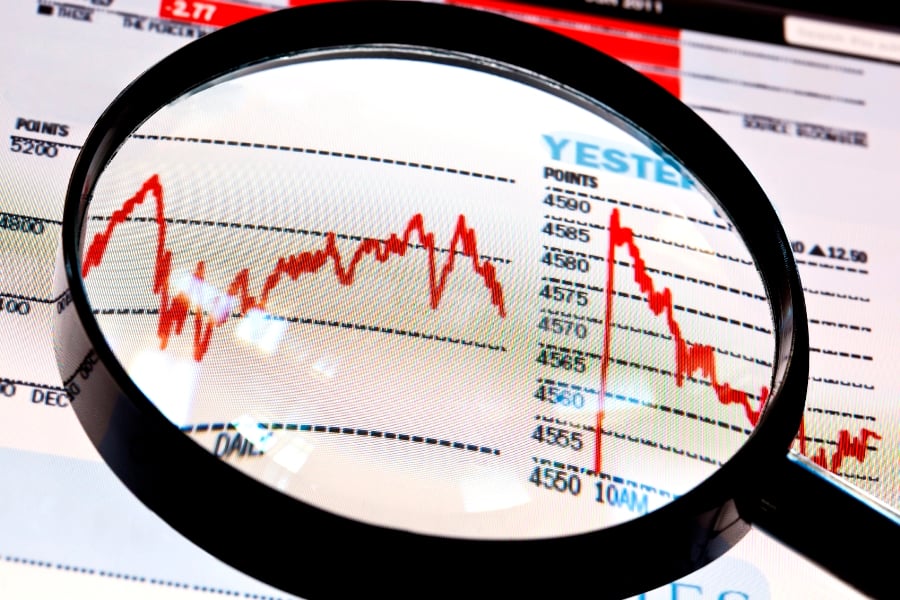Inflation is the big enemy of the bond market. But bond investors, it turns out, tend to overestimate their foe.
Since at least 1999, inflation has rarely been as bad as the $12.7 trillion Treasury market has suggested, data compiled by Bloomberg show. In fact, even after investors scaled back their expectations, they still often overstated how much consumer prices would actually rise.
The disparity is especially important now because the bond market's outlook is key in helping the Federal Reserve to decide just how much interest rates will need to rise from rock-bottom levels. And less inflation means Fed officials can take their time to lift borrowing costs, which may prevent sparking a selloff in bonds.
“People in the marketplace are totally overestimating inflation,” said Thomas di Galoma, the head of fixed-income rates and credit at ED&F Man Capital Markets in New York. “They believe as the Fed keeps rates at zero you're going to get inflation, and that's been proven to be false.”
After more than six years of near-zero rates and trillions of dollars of bond-buying stimulus by the Fed, signs of an upswing in the economy have investors in the Treasury market seeing a pickup in inflation — which has languished below the central bank's goal of 2% for three years.
GREAT EXPECTATIONS
While consumer prices have barely budged this year as oil tumbled, traders are betting inflation in the next five years will average 1.41% a year and then top 2% in the half-decade after that, based on a bond metric known as the break-even rate,
data compiled by Bloomberg show.
That's being reflected in higher yields on Treasuries.
Those on the 10-year note, the benchmark for governments, businesses and consumers, has climbed more than a half-percentage point since its low of 1.64% in January. They were at 2.24% as of 10:58 a.m. in London.
The market's concern over inflation, which erodes the value of interest payments, is becoming pivotal in shaping the Fed's monetary policy, especially as the rest of the economy rebounds from its first-quarter setback.
With unemployment at a seven-year low, sales of previously owned homes reaching the highest since 2007 and analysts forecasting the U.S. will grow faster than at any time in a decade next year, economists in a Bloomberg survey see a 50% chance the central bank will start lifting its rate in September.
Fed Chairwoman Janet Yellen has repeatedly said she will raise rates this year if the economy improves as expected and that effects of lower oil weighing on inflation will fade.
BOND MATH
Yet history suggests that there's less need for bond investors to worry.
The market's five-year estimate for inflation beginning five years from now, a model the Fed uses in setting rates, has consistently been off the mark, regardless of whether rates were high or low, data compiled by Bloomberg show.
On average, investors lowered their expectations by about a half-percentage point as time passed, which still overshot the actual rate more than half the time in the past five years. If that trend holds, it suggests traders are pricing in an inflation outlook, currently at 2.09% from 2020 to 2025, that's still far too high.
“The Fed's point of view is, more or less, time heals all wounds, at some point things will be normal-ish, and that inflation ought to be higher, particularly given the amount of stimulus,” said Thomas Graff, who manages $3.6 billion of debt at Brown Advisory Inc. in Baltimore. “That hasn't happened.”
Mr. Graff said he's “overweight” Treasuries.
LACKLUSTER WAGES
Part of the reason inflation may keep disappointing this time is that the economy isn't producing enough wage growth.
In June, hourly earnings stagnated from the prior month, the worst reading of the year. On an annual basis, wages have increased an average 2.1% since the recession ended, the weakest in any expansion since at least the 1960s, data compiled by Bloomberg show.
Growth is coming from “the kind of things that aren't the big drivers” of inflation, said Cathy Roy, chief investment officer for fixed-income at Calvert Investments, which manages about $13 billion in Bethesda, Md. Bond-market measures “have been deceptive for quite some time.”
COIN FLIP
Stephen Stanley, the chief economist at Amherst Pierpont Securities LLC, sees good reason for the bond market's anxiety over inflation. He says Treasuries will lose favor as stronger growth compels the Fed to boost rates to contain inflation.
He estimates 10-year Treasury yields rising to 4% in the next 12 months as inflation, excluding food and energy, reaches 2%. He also envisions the Fed raising rates by a percentage point more than the central bank's own estimate.
“It's more than anything else a statement of where I see the economy and, in turn, the Fed heading over the next couple of years,” Mr. Stanley said from Stamford, Conn.
While odds of a rate increase by year-end are still a coin flip to futures traders, lower long-term inflation suggests the central bank may not need to boost borrowing costs much at all before stopping — and keep Treasuries in demand.
Fed officials themselves predict the benchmark rate will rise to 1.625% by the end of next year.
Michael Pond, the head of global inflation-linked research at Barclays Plc, one of 22 dealers that trade with the Fed, says investors' tendency to overstate the risk of rising prices reflects their willingness to pay up to protect against inflation — whether it actually materializes.
Yet even with that premium, “over the medium-term period, the markets aren't priced for the Fed to get inflation up to its target,” Mr. Pond said.







